Top Laser Firms: Cross-Sector Breakthroughs – Avoid Old Track Involution Expand Frontier
source:Laserfair.com
keywords:
Time:2025-10-14
Source: Laserfair.com 20th Sep2025
When "involution" becomes the industry norm, "cross-sector expansion" and "boundary-breaking" open up "new possibilities" for China’s laser industry.
Laser enterprises that were once deeply engaged in industrial processing and precision manufacturing are now stepping out of the traditional track one after another, expanding into cutting-edge fields such as commercial aerospace, smart agriculture, and material remanufacturing.
Recently, Lianovation has entered the aerospace launch sector with superconducting technology; Tiangong International has reshaped the mold economy through laser cladding; and HGTECH has invested at the 100-million-yuan level to build a "team" of agricultural robots.
These leading laser manufacturers, relying on their core capabilities in laser systems, intelligent control and material processing, have achieved technological migration and industrial chain integration.
Although some areas are still in the early stages of commercialization and face uncertainties, the series of moves by these major players have clearly outlined the ambition of laser enterprises to transform from equipment suppliers to high-tech comprehensive service providers.
Lianovation Optoelectronics: "Cross-Sector" Expansion into Commercial Aerospace
Recently, Lianovation Optoelectronics, a leading laser enterprise, has acquired a stake in an aerospace company, becoming the first "cross-sector player" in the commercial aerospace field to enter via laser + superconducting technology.
According to news on September 10, 2025, Lianovation Optoelectronics recently issued an announcement stating that it plans to jointly establish Ziyang Commercial Aerospace Industry Operation Company with institutions including Ruimai Investment and Hanglv Technology, with a registered capital of 80 million yuan. Among them, Lianovation Optoelectronics will contribute 24 million yuan, holding a 30% stake, and act as the core driver of this cross-sector layout. The new company will focus on the electromagnetic launch field of commercial aerospace, mainly providing high-end magnetoelectric equipment such as high-temperature superconducting magnets and ground modules.

According to public information, Lianovation Optoelectronics originally focused its main business on laser and superconducting technologies, and this cross-sector expansion is not a blind one. As its core reserved technology, high-temperature superconducting magnet technology shares technical coupling points with aerospace electromagnetic launch. However, the company also admitted that there are no commercial precedents for this technology, and its prospects are uncertain. The commercial aerospace field has high technical barriers and huge capital demands; currently, there are few cross-sector entrants, and most of them choose a path that aligns with their core business.
It is reported that Lianovation Optoelectronics’ cross-sector layout focuses more on technological extension rather than pure capital operation; its essence is the exploration of superconducting technology applications in new scenarios. If successful in making breakthroughs, it may open a new era of electromagnetic launch commercialization, but it will need to face the dual challenges of technological maturity and market acceptance.
Tiangong International: Laser Cladding Reshapes the Mold Economy
There are also traditional industry giants "crossing sectors" into the laser industry—in the application landscape of laser technology, Tiangong International, a materials giant, is building new technical barriers through investment.
According to news on September 6, 2025, Tiangong International, a traditional materials giant, recently increased its capital in Shanghai Gaize Laser by 3 million yuan, acquiring a 5.56% stake. This seemingly small investment is actually a key move for traditional manufacturing to break into the high-tech service sector, and also represents the penetration of traditional materials enterprises into the field of laser intelligent solutions.

It is reported that laser cladding technology has huge potential in the mold repair field. Currently, 70% of damaged molds in the industry can be repaired, but the market lacks professional service providers—most operate in a small workshop model, which is unable to meet high-precision requirements. Through this investment, Tiangong International integrates laser cladding and AI detection technologies, aiming to build barriers in high-end mold repair and drive the industry’s upgrade from "manufacturing" to "remanufacturing".
Against the backdrop of manufacturing industry upgrading, the repair market for molds—known as the "mother of industry"—boasts enormous potential. Laser cladding technology not only extends mold lifespan and reduces enterprises’ procurement costs, but also improves the precision of mold manufacturing through digital repair processes. Tiangong International’s layout has precisely seized the technological breakthrough point for the upgrading of traditional industries.
In the future, as a leading producer of high-speed steel and mold steel, Tiangong International is reshaping the competitive landscape of the mold repair market through laser cladding technology.
HGTECH: Investing Heavily to Build an "Army" of Agricultural Robots
Notably, HGTECH has invested heavily to establish Huagong Zhiyun Technology, transferring industrial technologies such as laser welding and AI vision to the field of intelligent agricultural machinery. This realization of the "application of laser technology in agriculture" to reshape agricultural intelligent manufacturing is hailed as the most imaginative cross-sector case of 2025.
In July 2025, HGTECH, a leading Chinese laser enterprise, established Huagong Zhiyun Technology—a wholly-owned subsidiary—in Harbin, with a registered capital of 100 million yuan. Its business scope includes the manufacturing of intelligent agricultural machinery and agricultural robots.
This enterprise, renowned for its laser technology, has officially extended its business reach to the agricultural technology sector. The new subsidiary is jointly held by HG Laser and Huagong Investment Management, with Wang Jiangang, an equipment manufacturing expert, serving as its legal representative.

HGTECH’ s cross-sector expansion is not an isolated incident, but a strategic choice based on technology transfer. The company possesses technologies such as 3D five-axis laser cutting and AI visual positioning, which can be directly adapted to agricultural scenarios: for example, robotic arms sorting foreign objects in farmland, laser-strengthened agricultural machinery components, and real-time monitoring of crop growth. Northeast China is facing challenges of an aging workforce in agriculture and efficiency bottlenecks, and it coincides with the policy window period of the state’s 100-billion-yuan agricultural machinery subsidy—presenting significant market opportunities.
The establishment of Huagong Zhiyun is part of HGTECH’ s diversified industrial matrix. Since 2025, the company has laid out its presence in multiple fields including 3D printing and optical modules, forming a diffusion model of "technology industrialization and industrial ecologization". This cross-sector entry into agriculture is essentially the penetration of industrial technology into people’s livelihood-related fields, aiming to support the upgrading of traditional industries through high-end manufacturing.
Cross-Sector Boundary-Breaking: How Vast Is the Chessboard of Leading Laser Enterprises?
In fact, the cross-sector layout of laser enterprises is not accidental, but an inevitable result of technological development laws and market demand. As an advanced manufacturing technology with high precision and high energy density, laser technology boasts broad application scenarios and strong technology transfer capabilities.
A closer look at the three cases mentioned above reveals that the cross-sector moves of leading enterprises are by no means blind trials, but carefully calculated strategic steps: Lianovation Optoelectronics is betting on the upcoming decade of explosive growth in commercial aerospace; Tiangong International is seizing the node of manufacturing service industry upgrading; and HGTECH is capitalizing on the historical opportunity of agricultural modernization. They share a common feature: taking core laser technology as the center and expanding into adjacent fields with high technical barriers that have not yet been fully developed.
The cross-sector layout of laser enterprises is essentially a strategic choice to extend core technologies to multiple scenarios. By combining laser technology with the needs of different fields, these enterprises have not only expanded their own business boundaries, but also injected new vitality into related industries. From industrial manufacturing to commercial aerospace, from material repair to intelligent agricultural machinery, laser technology is leveraging its unique advantages to empower multiple industrial sectors and drive the transformation and upgrading of traditional industries.
In the future, with the continuous advancement of technology and the expansion of application scenarios, the cross-sector integration of laser technology will present broader development prospects, providing strong impetus for industrial upgrading and economic development.
 Global LiDAR Giants Engage in Escalating Patent Wars
Global LiDAR Giants Engage in Escalating Patent Wars From Cambridge to Haining, he made China's lasers light up the world for the first time
From Cambridge to Haining, he made China's lasers light up the world for the first time 4 in 5 days! These laser "mega-projects" successively put into operation or capped
4 in 5 days! These laser "mega-projects" successively put into operation or capped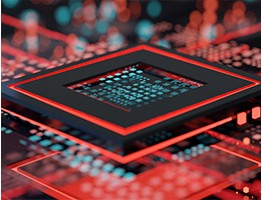 Analysis of Global Optical Communication Chip Market: Tiered Competition & Chinese Rise
Analysis of Global Optical Communication Chip Market: Tiered Competition & Chinese Rise "Laser Power" Shines at the Shanghai International Industry Fair
"Laser Power" Shines at the Shanghai International Industry Fair
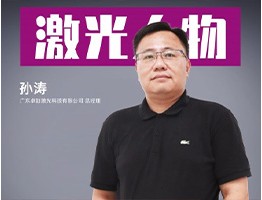 Zhuojie Laser: Breaking barriers via tech breakthroughs, aiming to lead high-end light sources
Zhuojie Laser: Breaking barriers via tech breakthroughs, aiming to lead high-end light sources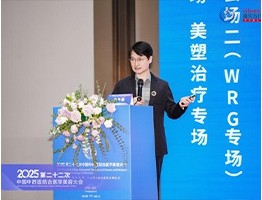 Dr. Sun Linchao: Pioneer and Leader in China's Field of Medical Aesthetic Laser Therapy
Dr. Sun Linchao: Pioneer and Leader in China's Field of Medical Aesthetic Laser Therapy Guo Guangcan, CAS Academician & USTC Professor: Four Decades Chasing Quantum "Light"
Guo Guangcan, CAS Academician & USTC Professor: Four Decades Chasing Quantum "Light"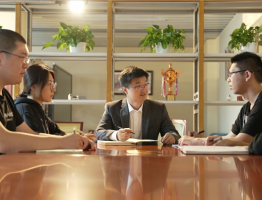 Ma Renmin: A Peking University Physicist Striving to Break Through the Boundaries of Nanolasers
Ma Renmin: A Peking University Physicist Striving to Break Through the Boundaries of Nanolasers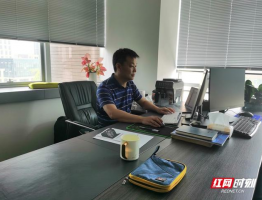 Lu Guangfeng: Retired but Not Faded, 20-Year Dedication to Laser Gyroscope R&D
more>>
Lu Guangfeng: Retired but Not Faded, 20-Year Dedication to Laser Gyroscope R&D
more>>










